For many of us, the traditional work model is beginning to feel rather restrictive. The good news? There could be a solution.
AI has been reshaping our world – and our workplaces – over the last few years especially. It’s hardly surprising, either. AI automates repetitive tasks and unlocks hidden patterns in data, but more than that? It's welcoming new opportunities to make money online.
We’re talking about passive income. Using the skills you already have and pairing them with the right AI tools, you could be making money in your sleep. Let's take a look at how you can achieve this.
What Exactly is Passive Income?
Let's imagine a scenario: you wake when you want to, you unlock your phone, and your bank account is growing – even while you're catching up on Netflix or walking the dog.
That's the magic of passive income. Recurring funds generated with minimal ongoing effort. Pretty much the opposite of a traditional 9-to-5, where time = money.
Passive income streams come in all shapes and sizes. Educational ebooks, online courses that grant people your expertise, fitness plans, and print-on-demand products. The trick is to build it once, market it well, and watch the income begin to drop (and eventually pour) in.
How Can AI Help Me to Make Passive Income Online?
Before we get into this, let's be clear: AI isn't here to replace you. And it isn’t going to do all of the heavy lifting, either. But, when used correctly, AI can help you to overcome the more time-consuming and repetitive tasks required to get your passive income flowing. Regardless of which passive income hustle you choose, AI can offer valuable general assistance.
For example, if you want to make money from writing, then AI writing assistants can help give inspiration, break down information quickly, and translate other languages. You can get help formatting programs and ebooks (especially if you aren’t a natural-born writer) to sell online. Tools like Grammarly help to make sure your writing is error-free and grammatically correct.
For more rudimentary work, let AI handle the repetitive tasks that suck the time out of your day. Scheduling social media posts, and automating email lists – chances are, AI can automate it. Now, you’re freed up to focus on the big-picture stuff – like brainstorming your next side hustle.
Lastly, don’t be afraid to lean on AI to make your vision a reality. Sometimes, you can picture what you want to create, but you lack the know-how to make it happen. While AI-generated art used to be pretty laughable (the hands, anyone?) its capabilities have skyrocketed since. Creating art with AI has become its niche community with a huge following – and therein, the potential to make some pretty sweet passive income.
9 Different Ways That You Can Make Passive Income With AI
So let’s get into it. Here are 9 ways you can generate a passive income using both AI and the existing skills in your tool belt.
1. Produce and sell AI-generated artwork
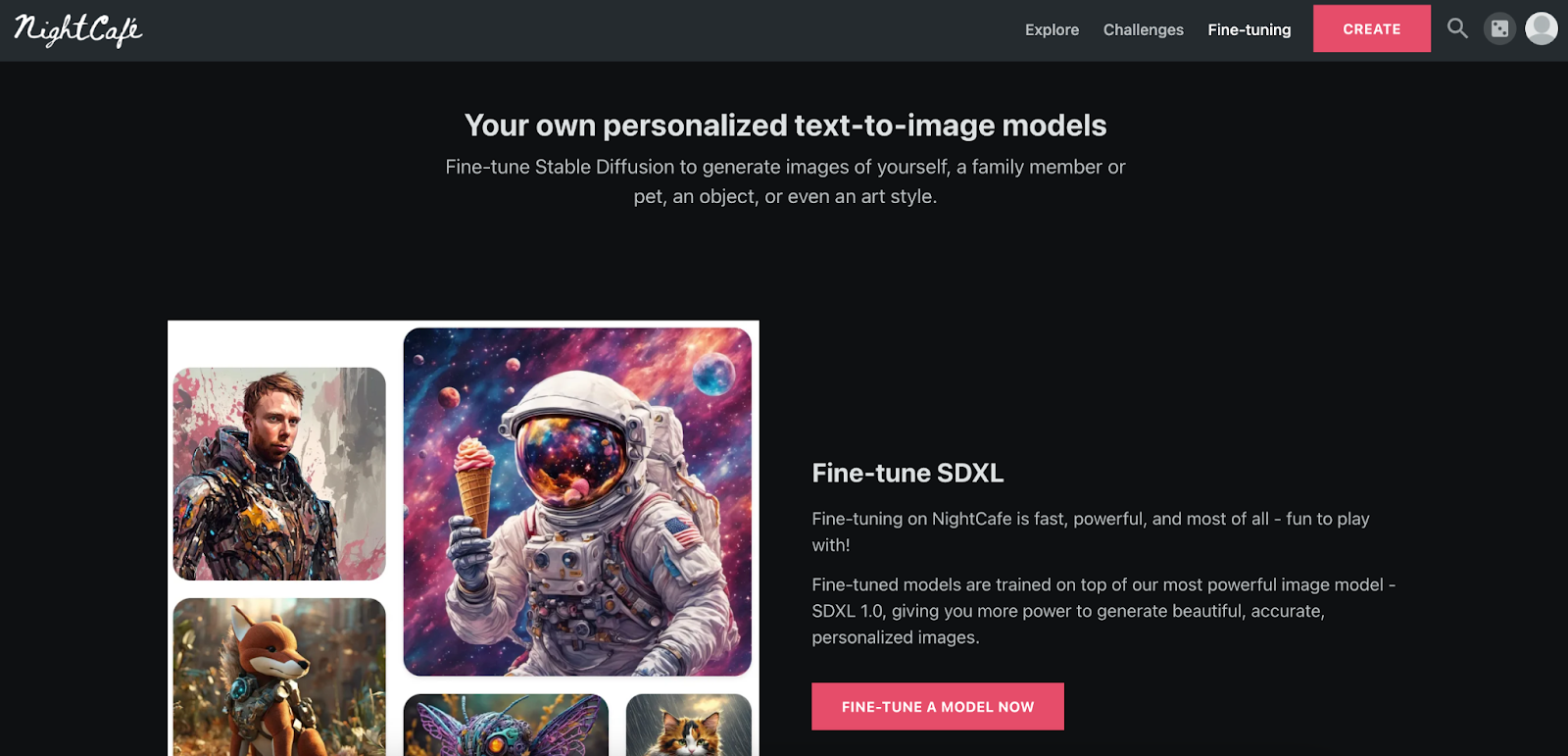
Hear us out. If there’s any world AI has disrupted, it's art. We know, AI could never replace the role of traditional artists – however, its capabilities have been hugely growing. As a result, AI artwork is becoming more and more respected as a niche. If creating art with AI interests you, you’ll be glad to know you can create some pretty unique stuff to sell online, turning your creative vision into a passive income stream.
How to get started:
Platforms like NightCafe Creator, Midjourney, and more, allow you to unleash your inner artist, even with limited artistic skills. You simply describe your vision with a text prompt and AI will generate a unique artwork. As with all AI tools, the prompt is everything and can determine whether your output is a masterpiece or a failure.
Once you’ve got that down pat, the rest is a breeze:
Sell art prints online:
Once you have your first piece you’re ready to sell, marketplaces like Whop, Etsy or Displate offer a platform to showcase art and sell works as digital downloads.
Sell your art on products:
Partner with a print-on-demand service to offer your AI art as high-quality prints. This allows your fans/followers/customers to receive your designs as physical artwork for their homes or offices.
Digging deeper, you can expand your reach beyond traditional prints. Print-on-demand services allow you to offer your art on products such as t-shirts, phone cases, mugs, you name it. This taps into the impulse-purchase market and caters to people who love unique designs.
Sell NFTs:
There’s a little more involved with NFTs than the other ventures we mentioned above. But, if you know a little about the blockchain and you’re confident to sell your works as NFTs (or willing to learn) this could be pretty profitable in the long run, and passively. We recommend doing a bit of research on this one first, to get a general understanding of how the market works before jumping in.
Tools you need:
NightCafe Creator, Midjourney, Etsy, Displate, Printful, Printify, Whop.
Earning potential:
It’s going to depend on a lot of factors. The art medium or product type, the platforms you’re using to sell, how well you market, and pricing strategy.
However, determined artists are often able to make thousands per month, through consistent artwork creation and clever marketing (and time, of course).
2. Use AI to create online courses
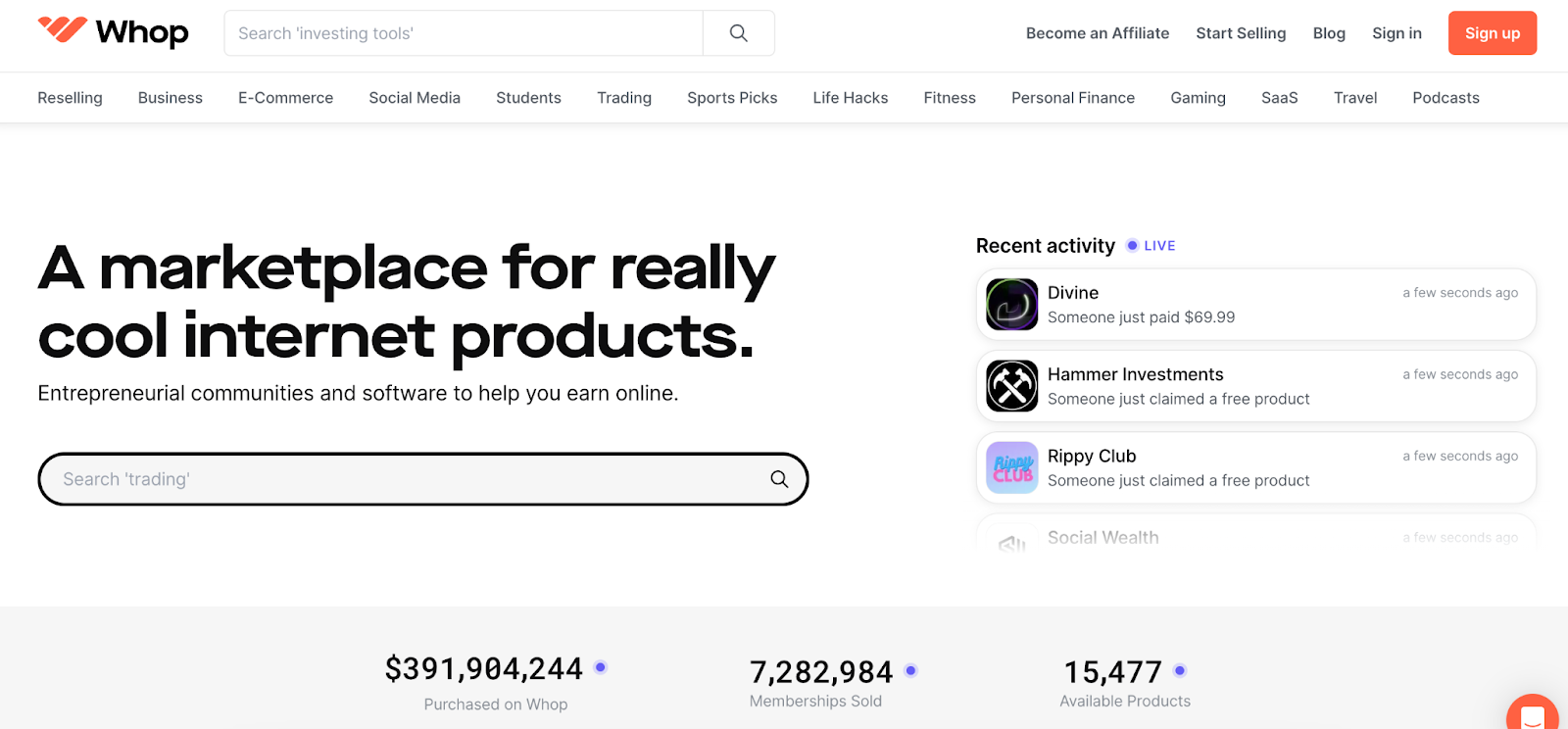
Knowledge is power, as they say. Well, sharing yours could be a profitable pursuit. If you’re an expert in something, AI I can assist you in crafting high-quality online course content. When it comes to courses, pretty much no niche is off-limits. You could be a coach, instructor, or speaker, it doesn’t matter. You have the know-how, AI can bring it to life.
How to get started:
Overwhelmed? We get it. Converting complex knowledge from your brain into clear and concise course content? It takes some time. Formatting, arranging, ordering, chaptering. If those words make you recoil slightly while reading this, just know that AI writing tools can help you develop outlines, summarize information, and even create quizzes and assessments for students to follow up with.
Connect with your target audience:
If you want to sell your course, you need to market it to the right people. When it comes to online marketplaces, competition can be high. Building a community is paramount to successfully selling courses online. Platforms like Whop have built-in features to allow you to interact with your audience and build genuine connections, leading to more sales.
Sell your course:
Platforms like Whop offer user-friendly interfaces to build and host your online courses. Once your course is created and ready to be sold? It’s time to leverage social media, email marketing, and online advertising to reach your target audience. And yep, you guessed it - AI can help with that too.
Tools you need:
Jasper, Rytr, Whop
Earning potential:
Courses can range from affordable to luxury, and it’s up to you where to position yourself. Earning potential will, of course, depend on your niche, course length, and pricing structure. There are pros and cons to both – cheaper courses are more likely to sell in higher numbers, while luxury courses can earn you significant income off a single download. From business to gaming, fitness to finance; Whop creators are selling online courses in just about every niche.
3. AI-powered affiliate marketing
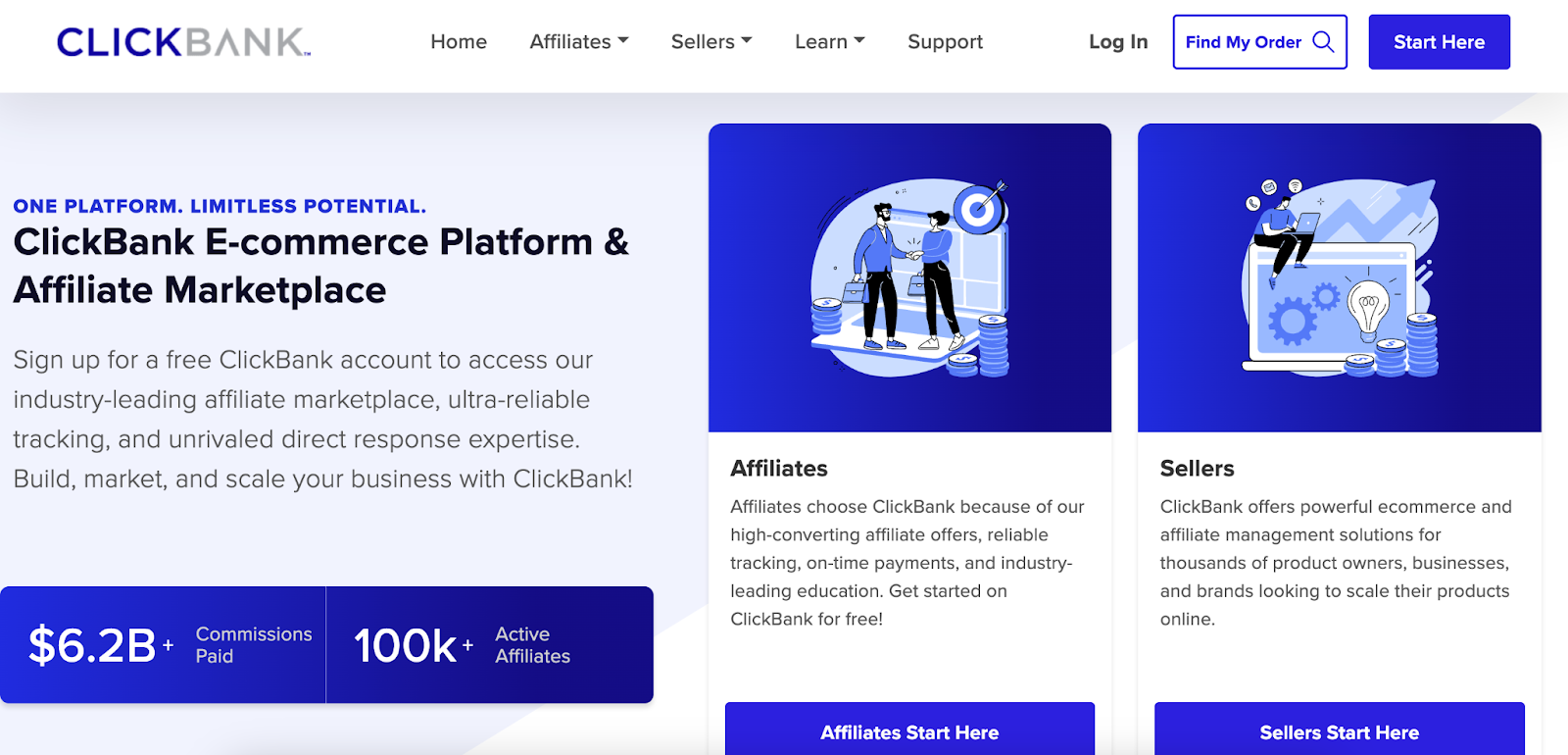
“Don’t I need to be an influencer to do that?” Not anymore. In fact, ‘micro-influencers’ are becoming more and more popular with companies looking for creators who have a more intimate audience. So, what exactly is affiliate marketing?
Being an affiliate marketer offers a way to earn income by promoting other people's products. This is most commonly done through social media, where creators are paid a commission through direct or affiliate links they get their audience to buy from. If you’re already a social media guru, this is a pretty passive way to make a few extra dollars on the platform. While it sounds pretty easy, finding the right products and managing affiliate programs can be a challenge.
How to get started
AI tools like Ahrefs or SEMrush scour the web for high-performing affiliate programs that align with your niche and target audience. This gives you valuable insight into which companies are worth applying to – and which to avoid. By investing in these tools, you’re more likely to find better quality companies to partner with and waste less time.
Sign up to a platform:
Dedicated affiliate marketing companies exist to offer affiliates a vast selection of products across various industries and brands. Our tip? Choose products you genuinely believe in to build trust with your audience and maximize conversions.
Tools you need:
Ahrefs, SEMrush, ClickBank, ShareASale.
Earning potential:
Commissions vary depending on the product and affiliate program, but some affiliates earn substantial income through strategic marketing and audience engagement.
Psst… Check out the Whop affiliate program, too.
4. Develop apps with AI coding tools
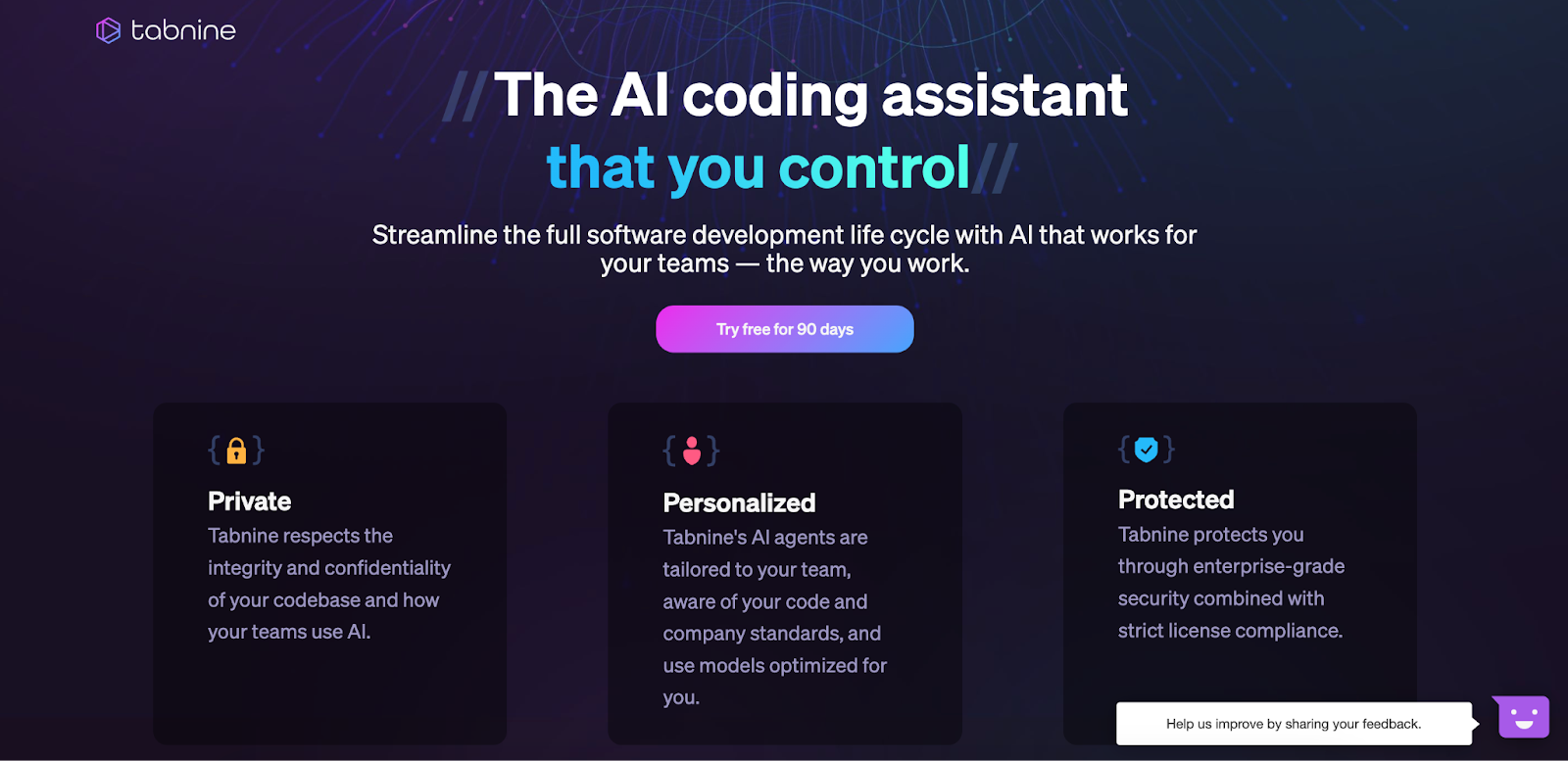
Have a little coding knowledge? Looking to put it to good use, but you’re not sure how? It turns out, AI coding tools are now disrupting the development industry, too. Some of these tools make it possible to create fully functional apps, without extensive experience in development. Pretty cool, huh? Here’s how you can get started:
How to get started:
The first step is brainstorming a unique and valuable app concept. Easier said than done. Consider current trends in app gaming, or solutions to problems you see online (wellbeing, mental health, etc). Maybe you build presets as a photographer – consider developing a photo editing app using sought-after, pre-built presets. The options are pretty limitless.
Leverage AI for development:
Coding tools can assist you throughout the development process. Platforms like Tabnine or Bubble can suggest relevant code snippets, or create full-stack, no-code apps on a building platform.
This significantly reduces development time, especially for repetitive coding tasks. Tools like Figma or Adobe XD offer features powered by machine learning that can help you design intuitive and user-friendly interfaces for your app.
Turn your idea into reality:
While AI can be a powerful co-pilot, it likely won't write your entire app from scratch. And even if it can? You'll still need to understand the basics of app-building principles and have a good grasp of functionality. Some AI coding tools offer interactive tutorials and learning resources to bridge this gap.
Tools you need:
AI coding tools such as Tabnine; AI tools such as Adobe XD.
Earning potential:
Once your app is developed and tested, you can publish it on app stores or digital marketplaces like Whop. Depending on where how you choose to publish and sell your app; you have several monetization options.
You could charge a one-time fee for users to download your app and access all features – or, offer a basic version of your app for free, with additional features or premium content available for purchase within the app. You can also make passive income from your app by using a subscription model and offering premium features or ongoing access to your app through a monthly or yearly subscription.
5. Create ebooks with AI
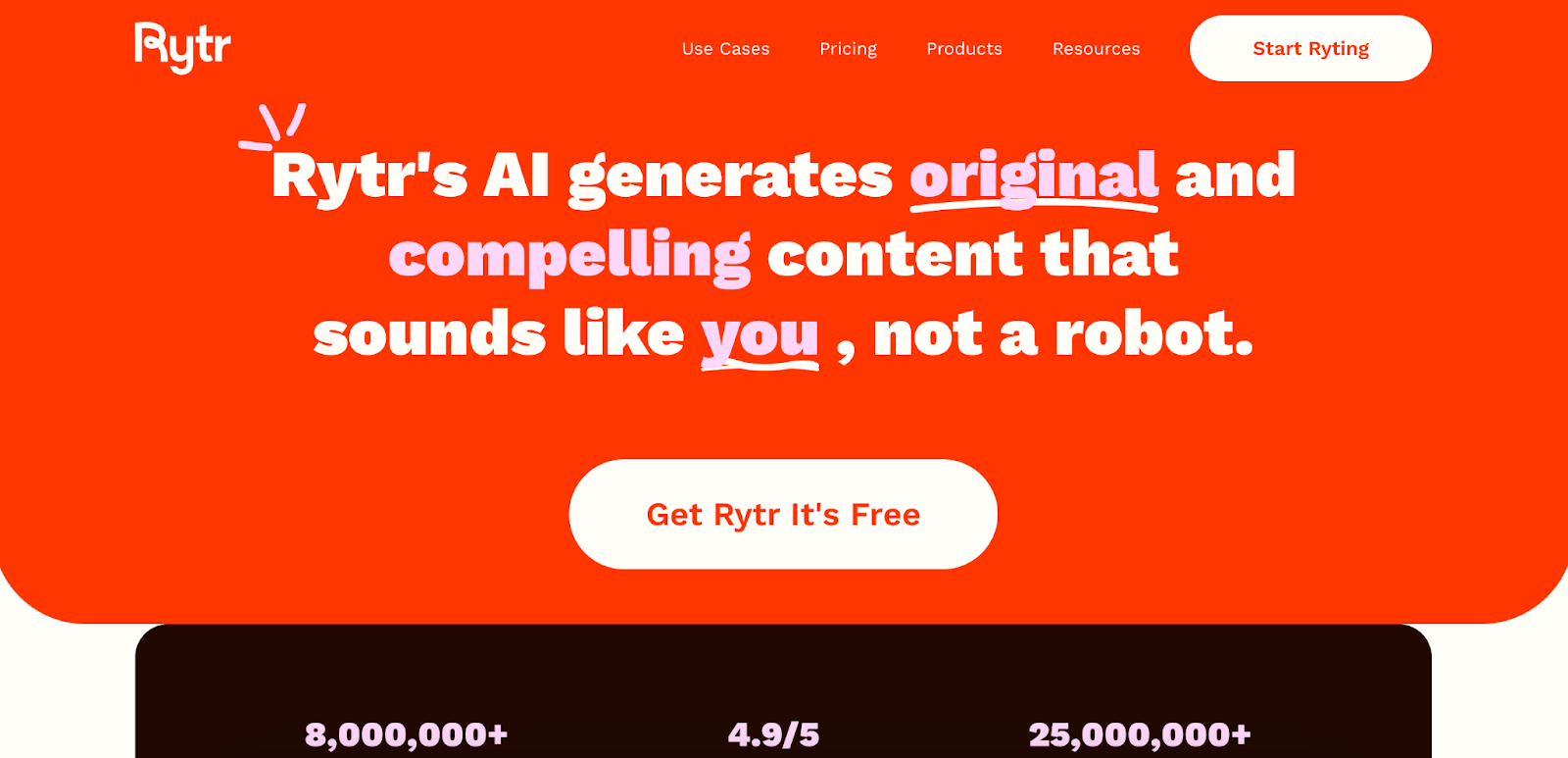
Ebooks have long been a well-known to make money online, and an exciting way to reach a global audience. Writer's block and the whole content creation process, on the other hand, can feel daunting. While you have the ideas, knowledge and wisdom; AI has the know-how to get it onto paper (or in this case, screens) in a way that resonates with readers.
How to get started:
You don’t need to be a writer to create and sell ebooks. AI writing assistants like Writesonic or Rytr are your key to unlocking the doors to well-written content. These tools can help you overcome writer's block, expand on your ideas, generate chapters, and outline your e-book. If you need to check grammar, adjust your tone, or translate into different languages? You’re covered.
Add to your ebook:
A blank ebook filled with text probably isn’t going to sell. If you’re not much of a creative, you can use AI to create visuals like images, infographics, and charts to enhance your ebook's readability and value.
Publish and sell:
Once your ebook is complete, you can sell it on online marketplaces, and reach a global audience of readers. As with any of the methods we’ve mentioned, it won’t sell itself, and marketing is a wise investment.
On the bright side, every time someone downloads your ebook, you earn direct income or a split commission with your hosting platform – passive income at its finest.
Tools you need:
Rytr, Writesonic.
Earning potential:
While some ebook authors can earn a comfortable living solely from ebook sales, most use ebooks as lead magnets to build an email list and promote other products or services.
Check out Whop for more examples of written digital products you could start selling.
6. Generate downloadable worksheets and files
Not quite ready to tackle an ebook, but still think you’ve got information worth sharing? Consider downloadable worksheets - basically, mini ebooks. These could be study worksheets for tutoring, budgeting templates for finance enthusiasts, or social media content calendars for aspiring entrepreneurs.
How to get started:
As with writing ebooks, you can use tools like Writesonic and ShortlyAI to transform complex information into bite-sized, easy-to-understand summaries. Then, package these summaries into downloadable worksheets, templates, or cheat sheets that target specific learning needs.
Sell your downloadable content:
There are several ways to sell your downloadable content – you can offer them through your website, an online marketplace, or even bundle them together as a paid course.
Tools you need:
ShortlyAI or similar.
Earning potential:
Earning potential depends on the value you provide, pricing strategy, and marketing efforts. The Whop marketplace can be a good place to gain inspiration from other sellers and their products.
7. Create and sell AI audio

Hear us out for a second - no pun intended. Audio content is a hot market right now, thanks to the popularity of podcasts and audiobooks. Content creators in these industries are always seeking royalty-free audio that doesn’t sound generic. Turns out, a lot of royalty-free audio being sold online is being created with AI.
You could capitalise on this technology, particularly if you have a talent or interest in music and sound. Certain tools can generate royalty-free sound effects, craft compelling voiceovers, and even create music.
How to get started:
Platforms like Murf or Resemble can generate voiceovers, music, or sound effects for various applications. Tools like Udio and Suno can help you to generate musical tracks.
Sell your AI audio:
You can host your audio creations through online marketplaces; or build a portfolio online to direct leads to. This passive income could lead to more active income, offering custom audio creation to creators needing unique sound design elements for their projects.
Tools you need:
Murf, Resemble or similar.
Earning potential:
Earning potential varies a lot, depending on the type of audio content, licensing options, and marketing efforts. Some creators earn a decent income from royalty-free audio downloads, while others focus on high-value custom audio projects for clients.
8. Develop and sell AI-generated stock photos and videos
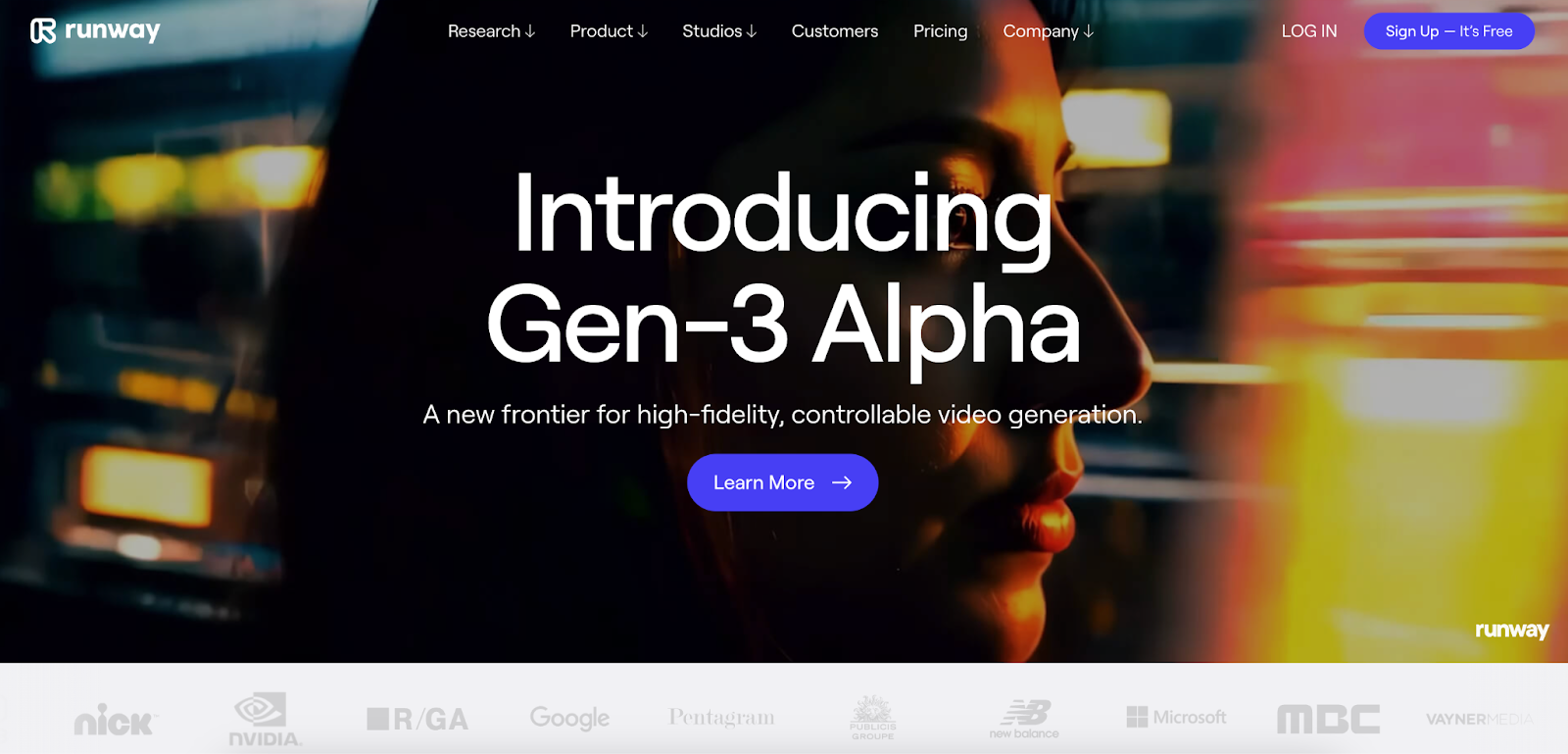
Stock imagery is always in high demand, and with the growth of short-form content, stock video is too. But what if you aren’t a camera professional? Well, you guessed it. AI tools can remedy that and have you create stunning stock imagery.
How to get started:
Platforms like RunwayML can create royalty-free stock photos and videos using AI. These tools work by having you provide keywords to create imagery and video from a single prompt. As with all prompt-based tools, mastering this is a skill in itself.
Learning to prompt will be key to becoming better at your craft. The good news? You can expect your results to get better as you become more comfortable with the technology.
Sell your stock photo and video:
You can sell stock imagery on online marketplaces – or directly to businesses and other creators from your website. While hosting platforms can help you gain some exposure in the beginning, you will often be splitting earnings with the company on each sale.
Copyright considerations:
It's really important to understand the copyright limitations associated with AI-generated content. Certain platforms may have restrictions on the use of certain AI-created visuals. So, always consult the platform's terms of service and copyright guidelines before uploading and selling your AI-generated stock photos and videos. That’s a surprise nobody needs.
Tools you need:
RunwayML, Shutterstock, Adobe Stock.
Earning potential:
Depending on the platform, the quality and demand for your content, and your pricing strategy, it varies. Some creators earn a decent income from stock photo and video downloads. Others use it as a supplementary income source alongside other creative endeavours.
9. Train your own AI assistant and sell it as a SaaS
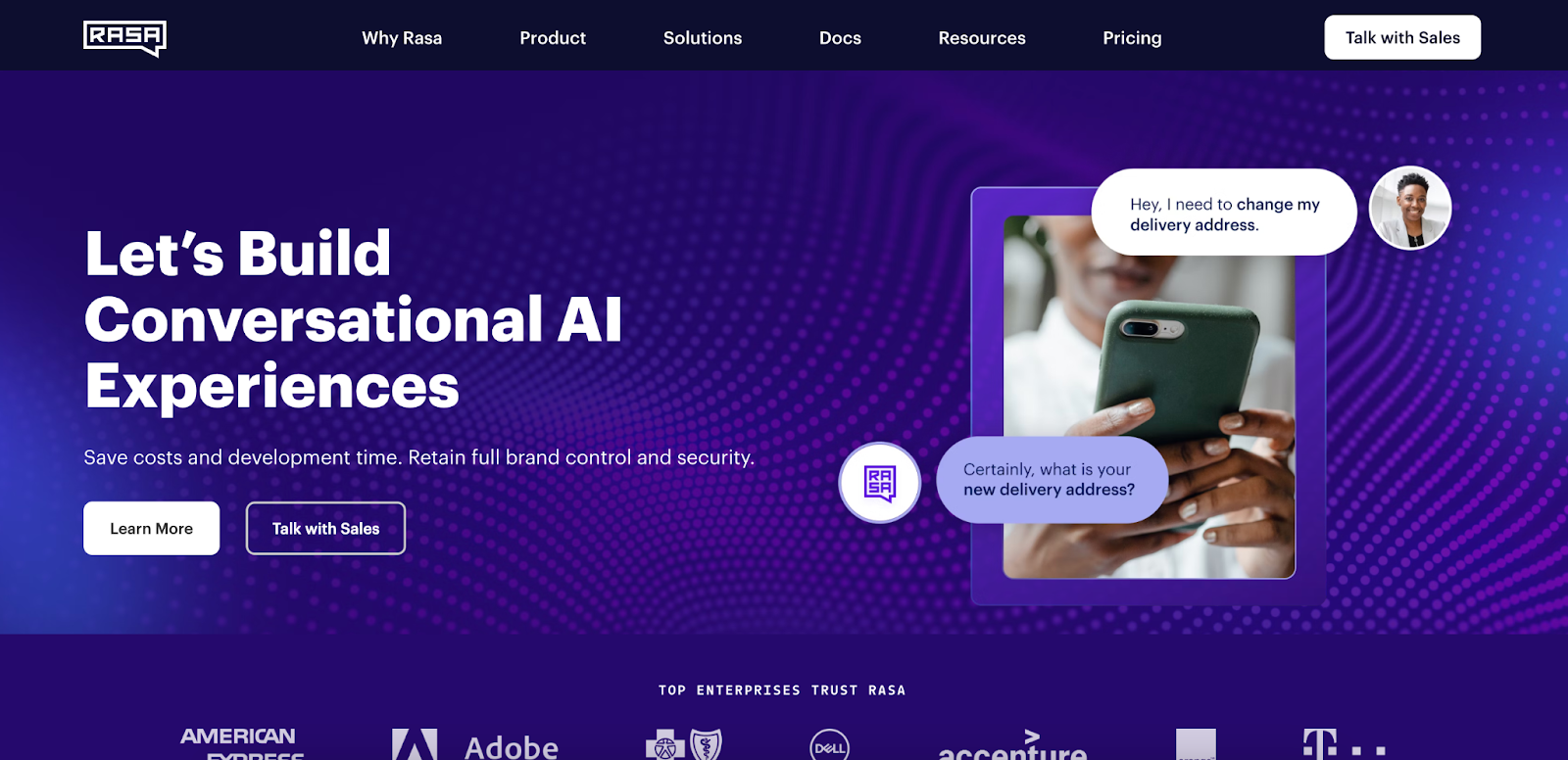
Have you thought about building software?
You can now create AI assistants trained to tackle specific tasks, sell these as a software-as-a-service, and generate income passively. Well-known SaaS companies include Adobe, Slack and Mailchimp. As you can see, the general theme is solving a problem; often related to workflows.
How to get started:
Start by identifying a niche where AI assistants can offer significant value. This could be data entry for a particular industry (e.g. legal, finance), managing social media accounts for real estate agents, or automating customer service for an online bakery.
The point is, that you can train your AI assistant to perform these tasks efficiently, and then target potential clients within your chosen niche.
Build a subscription service:
Develop a subscription-based model where clients pay a monthly fee to access your AI assistant's services. This may involve offering different subscription tiers with varying functionalities. This way, you allow clients to choose the level of service that best suits their needs and budget.
One-time setup and training:
Train the AI assistant to handle specific tasks for a client and offer a one-time setup fee. This is ideal for businesses that require a custom AI solution for a particular project or workflow.
Tools you need:
Dialogflow, Rasa or similar.
Earning potential:
The earning potential depends on several factors: the chosen niche, the value proposition of your AI assistant, and your pricing model. Platforms like Whop can help you price and sell subscriptions and memberships to your services, generating a steady passive income.
NOTE: Building a well-trained AI assistant takes time and effort. However, by carefully selecting your niche, effectively marketing your service, and ensuring your AI assistant is above board privacy-compliant, you can unlock a unique (and often rather high) passive income opportunity through the power of AI.
Remember: AI is an Impressive Tool, But It’s Not a Replacement
While AI is a powerful tool, it's not any sort of magic bullet for passive income success. The secret is combining AI's capabilities with your unique skills and creativity. Don’t worry, though. By following a few simple guidelines, you can make sure to maintain that balance and get the most from your tools and programs.
Firstly, AI-generated content is a great starting point, but it almost always requires the human touch for editing, polishing, and refinement. Let it give you the bones, and work from there.
Secondly, consider if you are churning out products for the sake of sales. That’s a huge no in business. It's better to have a few high-quality passive income streams than many mediocre ones. Put your time and effort into creating valuable content or products that people will love, and then you can sell this over and over again, without having to regularly create new, better products.
You can still make the most of AI’s capabilities without over-relying on the tool.
Free up your valuable time to focus on strategy, marketing, and content creation. You know, the areas where your human touch is irreplaceable. Then, use AI to brainstorm new ideas, overcome creative roadblocks, and generate fresh perspectives. Let it be your cheerleader to assist your own creation and product development.
Remember, AI helps you streamline processes, allowing you to do more in less time. This is invaluable for managing multiple passive income streams and scaling your earning potential.
Ready to Reap Some Passive Income? Check out Whop
You’ve identified where AI can help you build a side hustle and generate passive income, now it’s time to get started.
Whop is your one-stop shop for creating, selling, and profiting from your digital products. A social commerce platform designed to empower entrepreneurs and creators, it’s easy to get started.
First, create your account. This is your own whop, your online hub where you'll house and sell your digital products.
Whop make it easy to upload your digital products and set your pricing. No coding or technical knowledge is required – simply upload your content and watch the sales roll in. You can interact with your customers, offer exclusive content, and cultivate a loyal following that's more likely to purchase your digital products.
Whether you've crafted an AI-powered course, an informative ebook, or eye-catching digital printables, Whop offers the seamless infrastructure and services you need to sell your digital products. With the fulfilment side of things handled, you’re free to focus on creating and marketing your masterpieces.


![40 Easy Ways to Make Money Online [2024]](/blog/content/images/size/w600/2023/11/20-ways-to-make-money-online--1-.webp)


